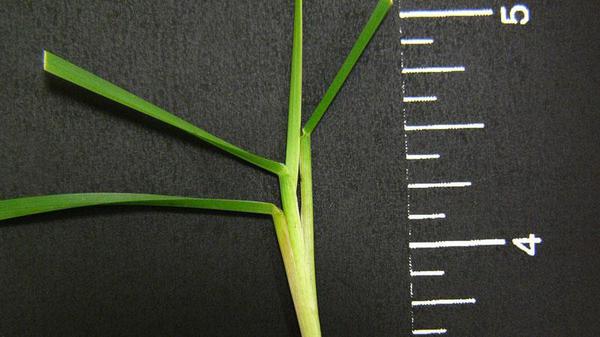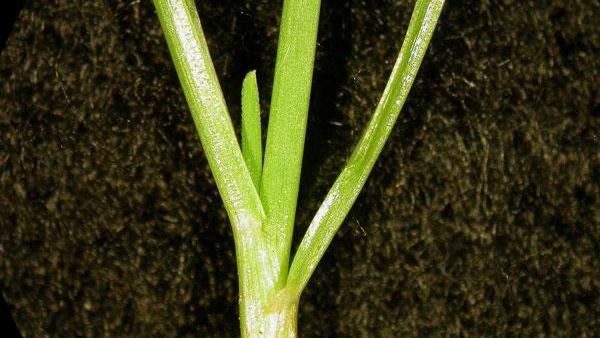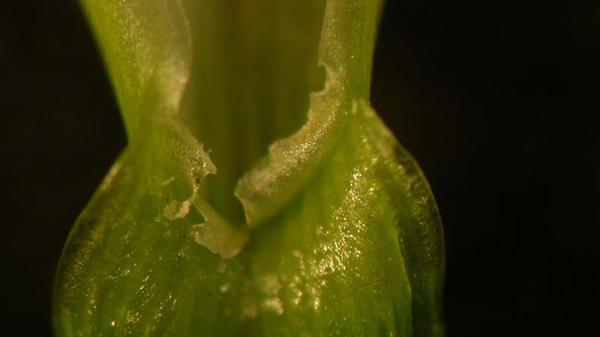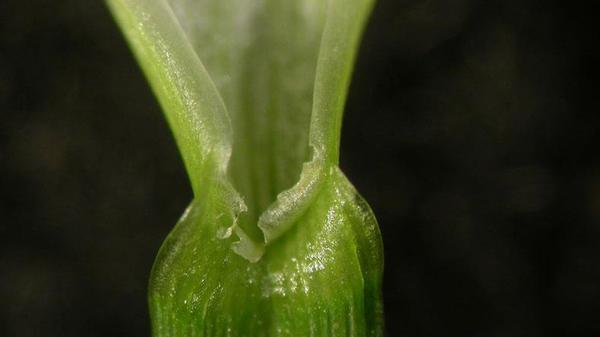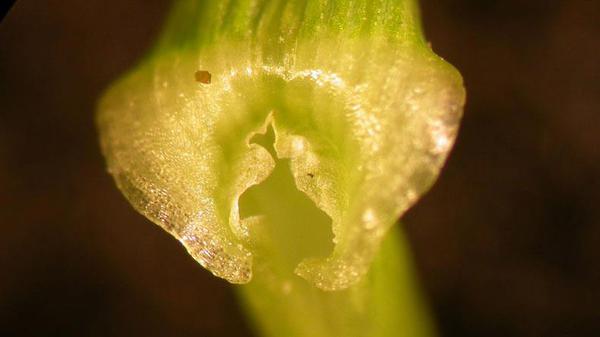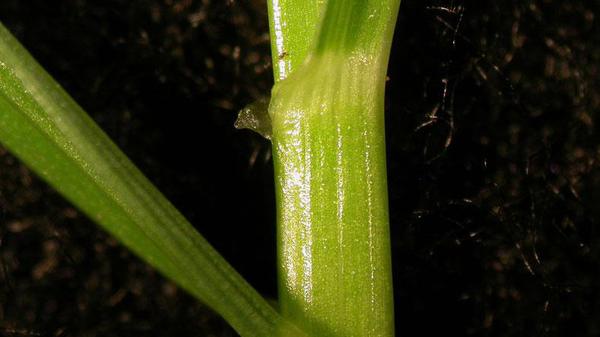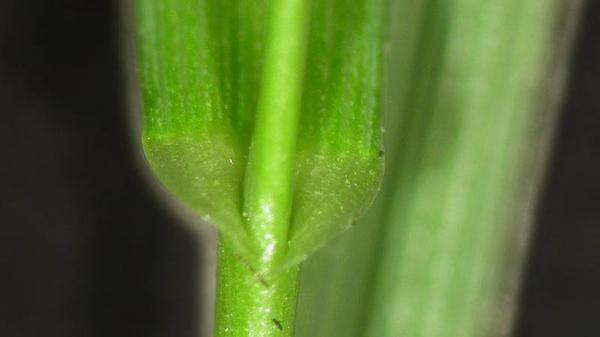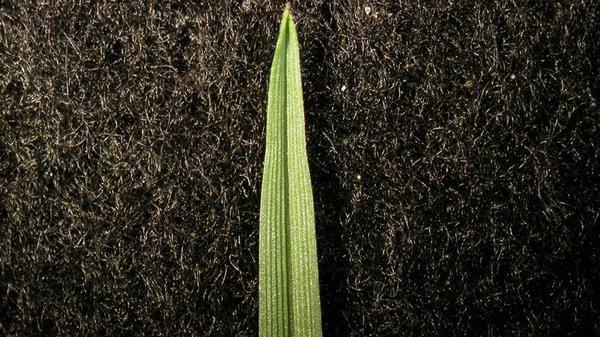Description
Perennial ryegrass (Lolium perenne) is a bunch-type grass that is used for winter overseeding on sites where high quality and winter color are needed. The texture, color, and density of perennial ryegrass are very similar to those of Kentucky bluegrass. Perennial ryegrass is often utilized for winter overseeding on golf course fairways and teeboxes, athletic fields, and high profile home lawns. Perennial ryegrass is often confused with tall fescue and / or Kentucky bluegrass. However, Kentucky bluegrass has a boat-shaped leaf tip and distinctive light-colored lines on both sides of the midrib. Tall fescue has rough leaf blade margins whereas perennial ryegrass has smooth ones. Also, tall fescue has rolled vernation in the leaf bud and perennial ryegrass has folded vernation.
Perennial Ryegrass as a Weed
Cultural Control
Perennial ryegrass is often overseeded to provide winter color in warm climates where turf is utilized in winter months. When warm weather prevails in late spring or early summer, this species usually will not survive. However, in the transition zone, especially during cool summers, wet summers, or both, perennial ryegrass can survive the summer and often becomes clumpy. This very attractive turf species becomes a difficult-to-control weed in these conditions. Control strategies should concentrate on controlling perennial ryegrass before it becomes clumpy.
Species Data
- SEEDHEAD / FLOWER
- a spike, with flattened spikelets along each stem
- VERNATION TYPE
- LIGULE TYPE
- GROWTH SEASON / LIFE CYCLE
- cool season turf or perennial weed
- AURICLE TYPE
- LEAF BLADE TIP SHAPE
- sharp-pointed; bright green, sharply creased, deeply ridged upper surface, lower surface smooth and glossy, edges slightly rough
Figure 8
- sharp-pointed; bright green, sharply creased, deeply ridged upper surface, lower surface smooth and glossy, edges slightly rough
- LEAF BLADE WIDTH
- 0.08 - 0.2 inches (2 - 5 mm) wide
- STOLON PRESENCE
- absent
- RHIZOME PRESENCE
- absent
- COLLAR TYPE
- divided by midrib, not hairy, distinct
- SHEATH TYPE
- sheath is usually flattened, reddish at base
Publication date: Aug. 22, 2022
Recommendations for the use of agricultural chemicals are included in this publication as a convenience to the reader. The use of brand names and any mention or listing of commercial products or services in this publication does not imply endorsement by NC State University or N.C. A&T State University nor discrimination against similar products or services not mentioned. Individuals who use agricultural chemicals are responsible for ensuring that the intended use complies with current regulations and conforms to the product label. Be sure to obtain current information about usage regulations and examine a current product label before applying any chemical. For assistance, contact your local N.C. Cooperative Extension county center.
N.C. Cooperative Extension prohibits discrimination and harassment regardless of age, color, disability, family and marital status, gender identity, national origin, political beliefs, race, religion, sex (including pregnancy), sexual orientation and veteran status.

